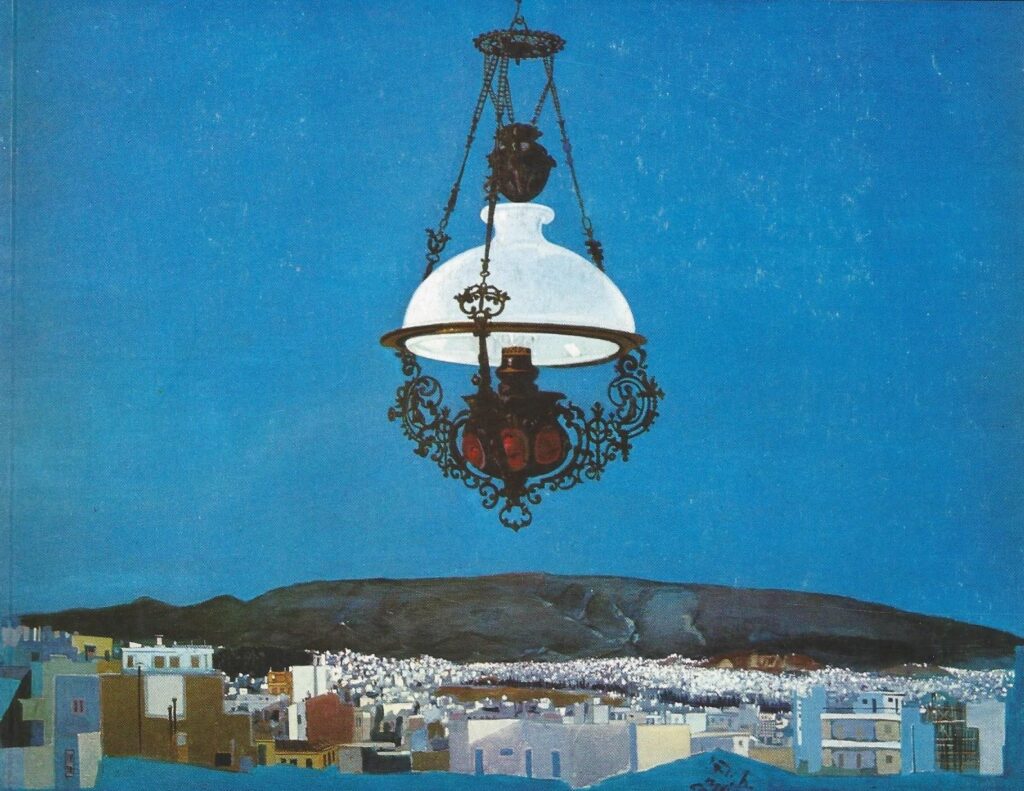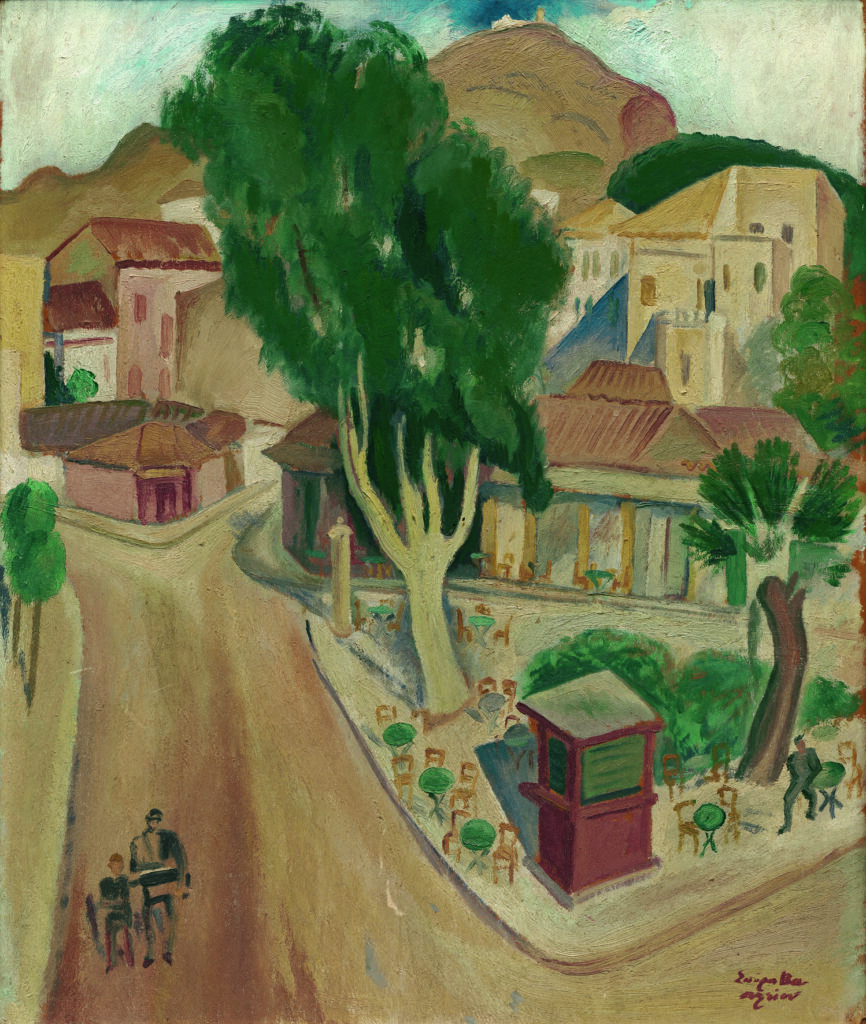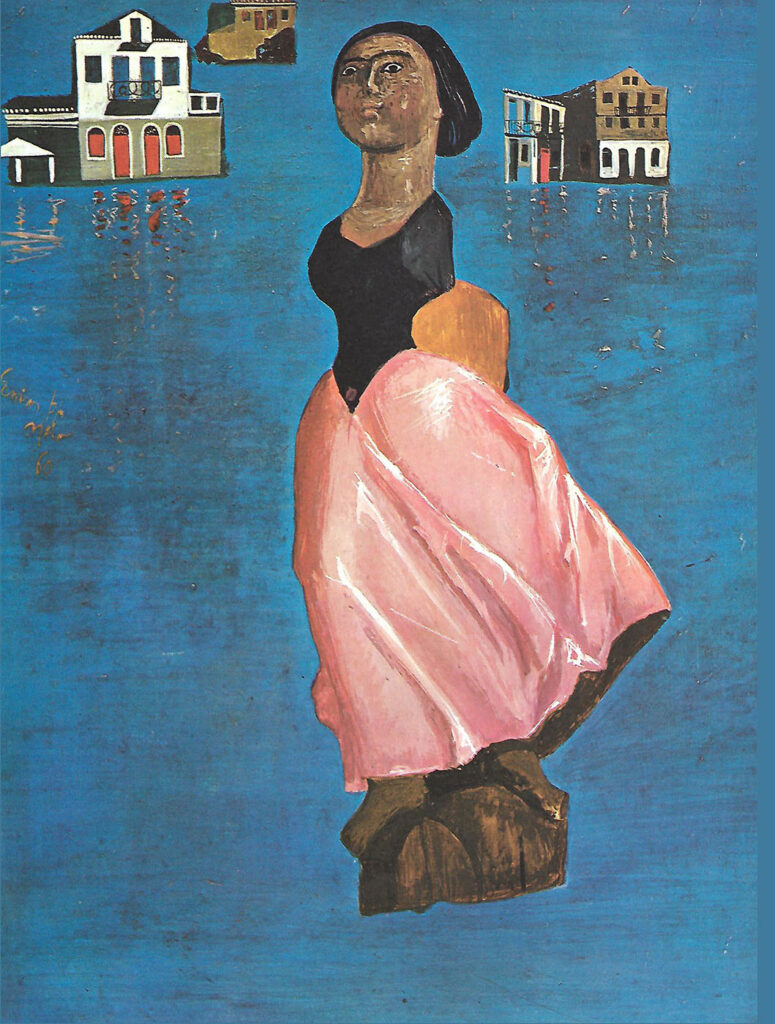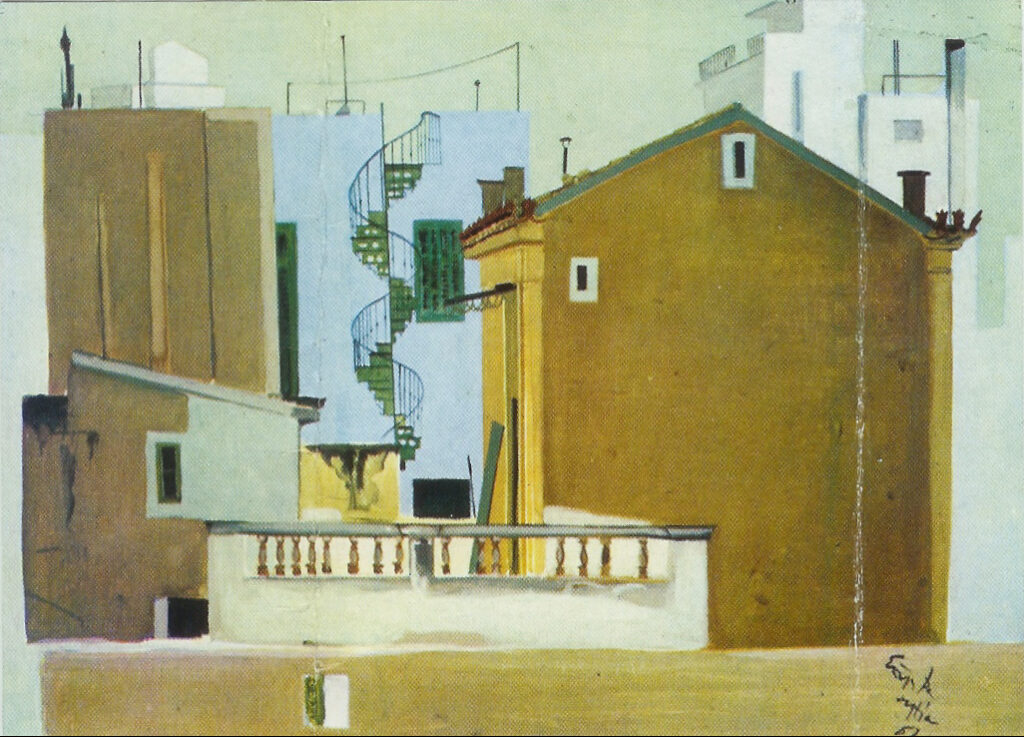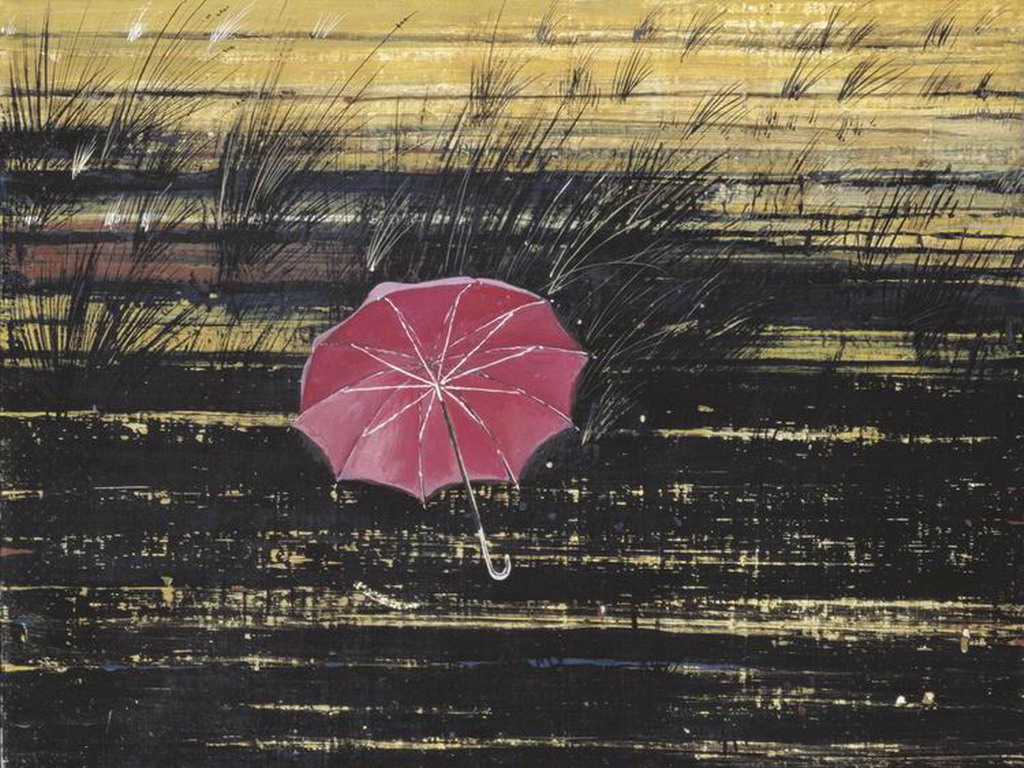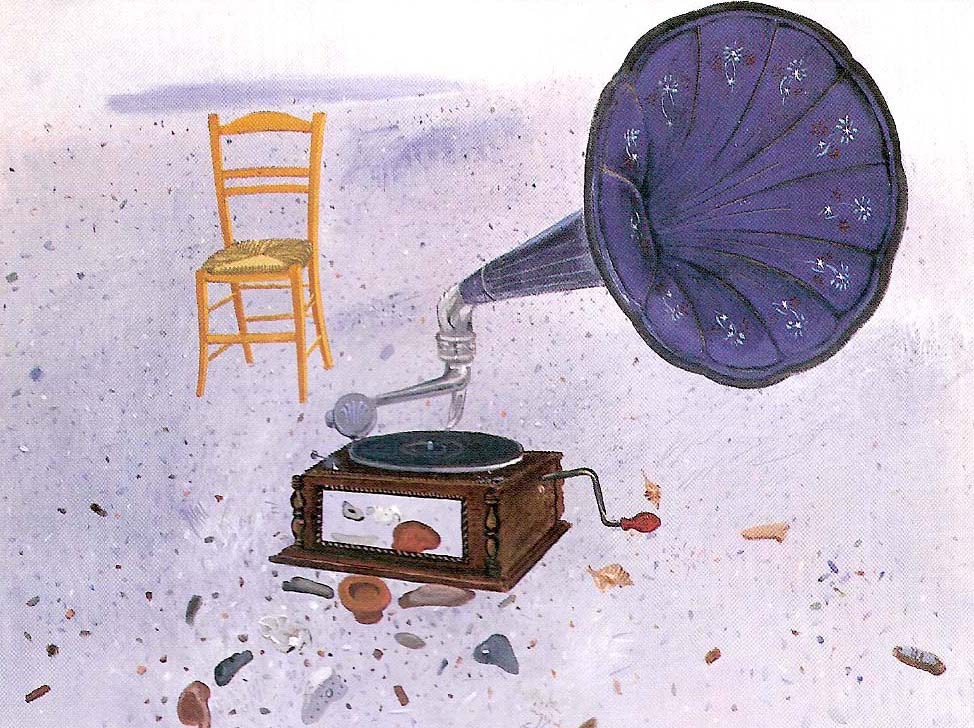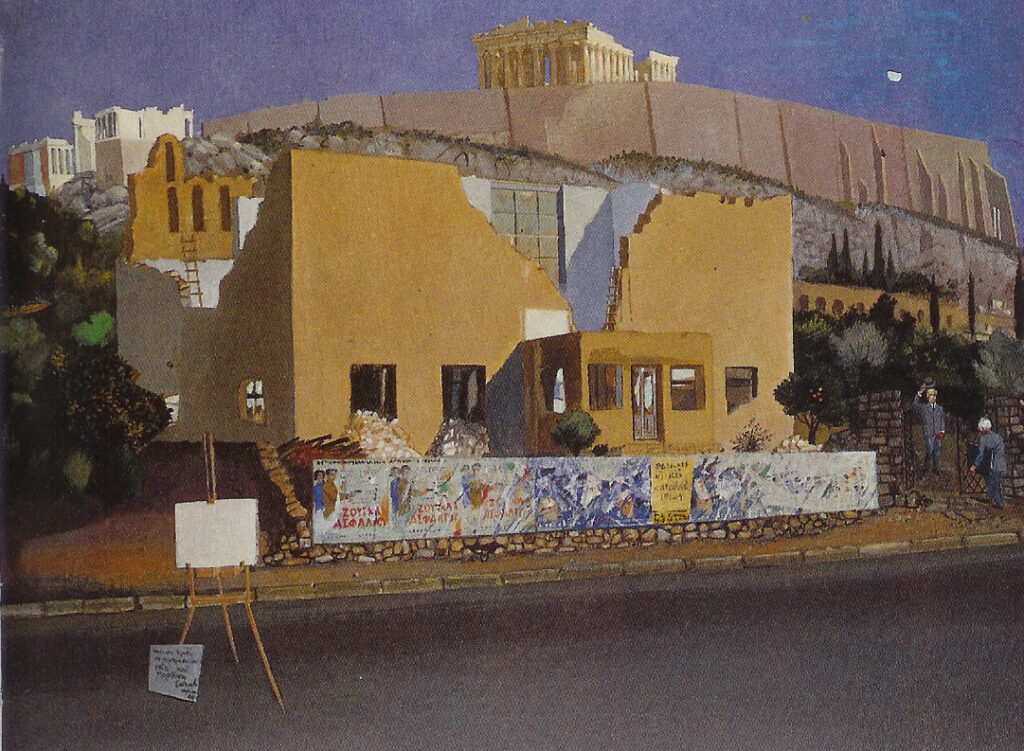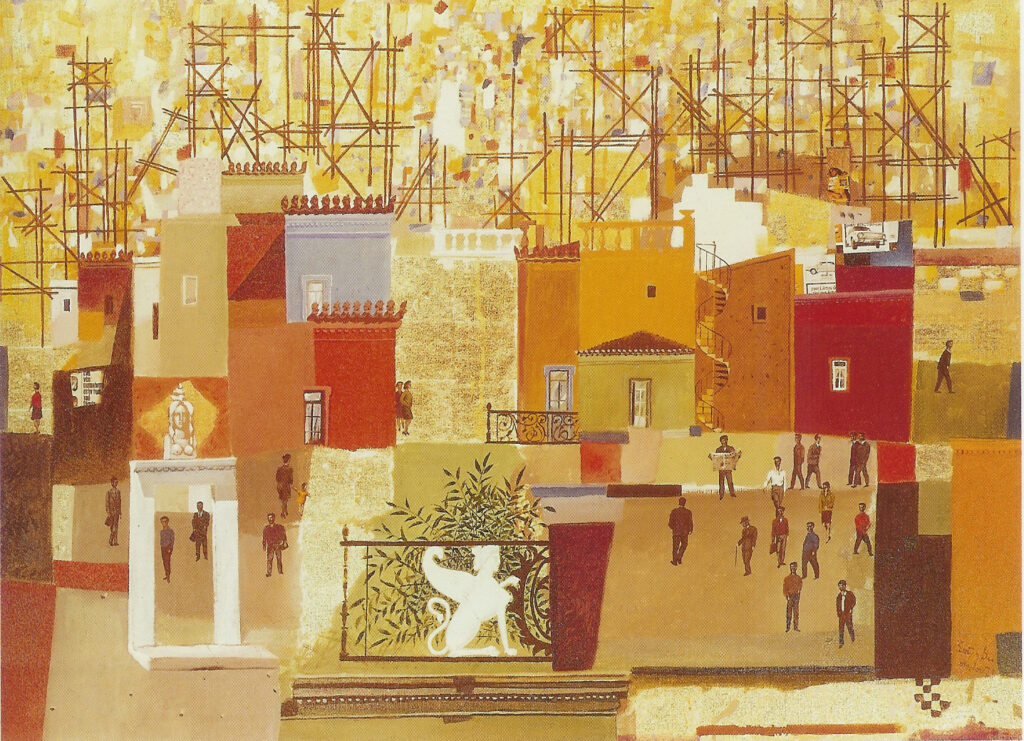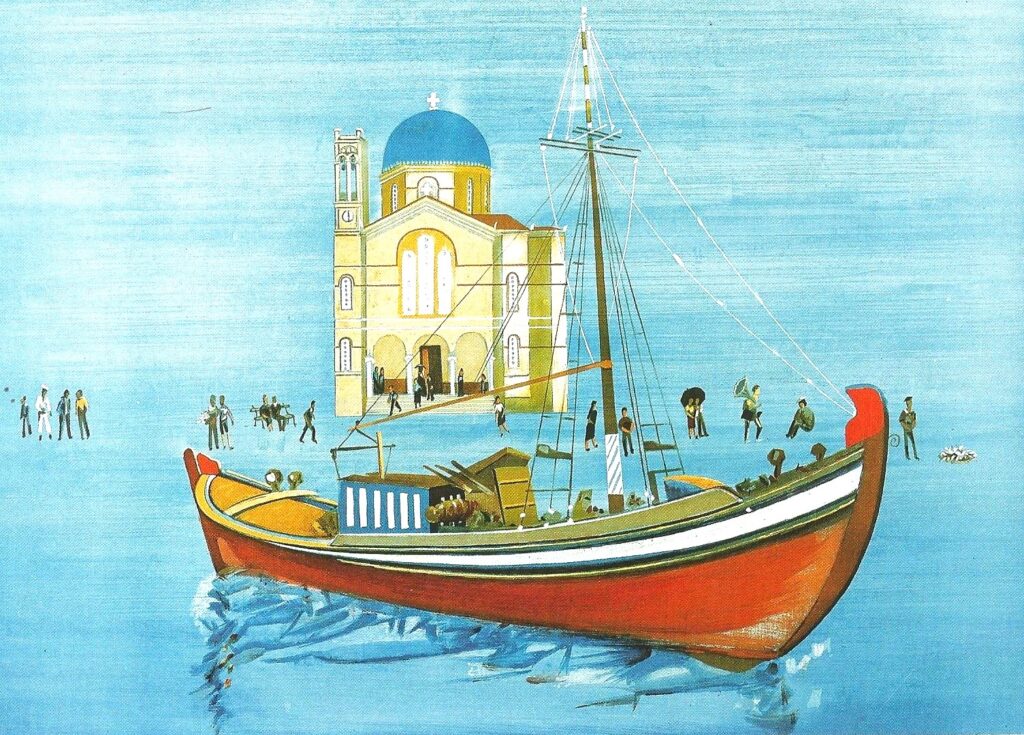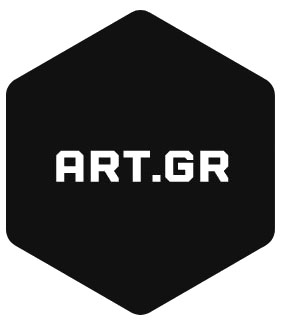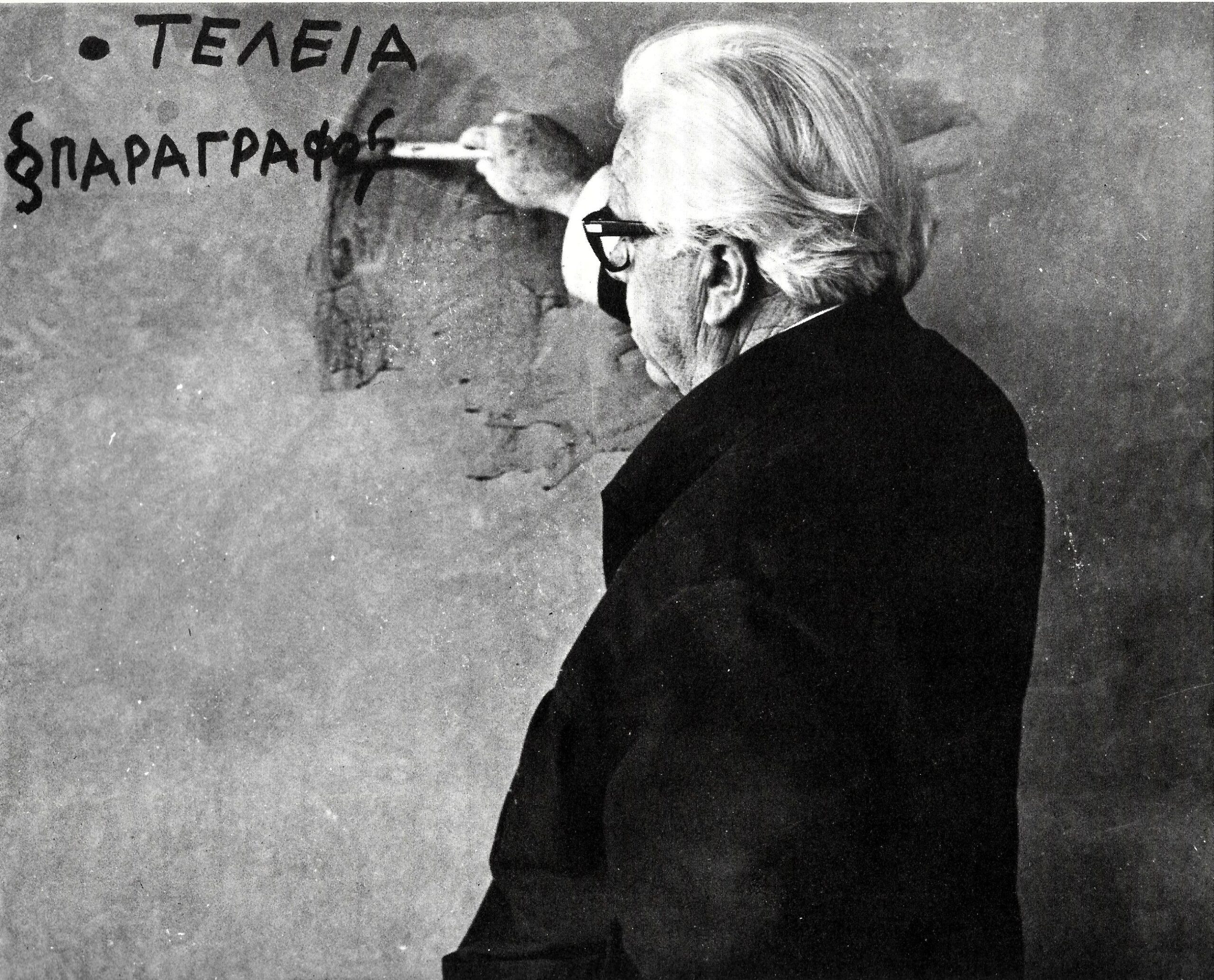Spyros Vassiliou (Galaksidi, June 16, 1903 – Athens, March 22, 1985) was a Greek artist, one of the most productive, recognizable and popular Greek visual artists. Painter, icon painter, engraver, scenographer, graphic designer, decorator, writer-critic and teacher. His artistic production is characterized by the meeting of the teachings of popular and Byzantine art with the experimentation of his contemporary currents.
He studied in Athens with a scholarship, at the School of Fine Arts of the National Technical University of Athens, from 1921 to 1926, with Kaloudi and Lytra as teachers. He began to present his works in exhibitions immediately after his graduation (in 1926 he exhibited in the foyer of the Municipal Theater of Athens together with Polykleitos Regos, Spyros Kokkino and Antonis Polykandriotis, in the “Exhibition of the Four” as they called it). Vassiliou held his first solo exhibition in 1929 at Stratigopoulos Gallery.
In 1930 he won the Benakeio Prize of the Academy of Athens for the fresco designs of the church of Agios Dionysios of Areopagitos in Kolonaki. With the prize money, he made his first trip to Europe, where he had the opportunity to visit museums and collections. The canonization of Agios Dionysios took place between 1936 and 1939. He was a member of the artistic groups Techni and Stathmi and the Chamber of Visual Arts of Greece, he participated in international exhibitions, at the Venice Biennale (1934, 1964), in Alexandria in 1957 and in Sao Paulo in 1959 while his works were presented in Detroit in 1955 (on the occasion of the illustration of the church of Saint Constantine in Detroit) and in 1960 at the Guggenheim Museum in New York (for his work “Lights and Shadows” in particular, he then received the Guggenheim Award of the Greek Section of AICA). Spyros Vassiliou taught at the Papastrateo School and later at the Athenian Institute of Technology. He was a member of the Greek Chamber of Visual Arts (EETE).
Ο Σπύρος Βασιλείου (Γαλαξίδι, 16 Ιουνίου 1903 − Αθήνα, 22 Μαρτίου 1985) ήταν Έλληνας καλλιτέχνης, ένας από τους πλέον παραγωγικούς, αναγνωρίσιμους και δημοφιλείς Έλληνες εικαστικούς. Ζωγράφος, αγιογράφος, χαράκτης, σκηνογράφος, γραφίστας, διακοσμητής, συγγραφέας-κριτικός και δάσκαλος. Την καλλιτεχνική του παραγωγή χαρακτηρίζει η συνάντηση των διδαγμάτων της λαϊκής και της βυζαντινής τέχνης με τους πειραματισμούς των σύγχρονών του ρευμάτων.
Σπούδασε στην Αθήνα με υποτροφία, στη Σχολή Καλών Τεχνών του Εθνικού Μετσοβίου Πολυτεχνείου, από το 1921 έως το 1926 έχοντας ως δασκάλους τους Καλούδη και Λύτρα. Άρχισε να παρουσιάζει τα έργα του σε εκθέσεις αμέσως μετά την αποφοίτησή του (το 1926 εκθέτει στο φουαγιέ του Δημοτικού Θεάτρου Αθηνών μαζί με τους Πολύκλειτο Ρέγκο, Σπύρο Κόκκινο και Αντώνη Πολυκανδριώτη, στην «Έκθεση των Τεσσάρων» όπως την αποκάλεσαν). Ο Βασιλείου έκανε την πρώτη ατομική έκθεσή του το 1929 στην γκαλερί Στρατηγοπούλου.
Το 1930 απέσπασε το Μπενάκειο Βραβείο της Ακαδημίας Αθηνών για τα σχέδια των τοιχογραφιών του ναού του Αγίου Διονυσίου του Αρεοπαγίτου στο Κολωνάκι. Με τα χρήματα του βραβείου κάνει το πρώτο του ταξίδι στην Ευρώπη, όπου είχε την ευκαιρία να επισκεφτεί μουσεία και συλλογές. Η αγιογράφηση του Αγίου Διονυσίου πραγματοποιήθηκε μεταξύ 1936 και 1939. Υπήρξε μέλος τον καλλιτεχνικών ομάδων Τέχνη και Στάθμη και του Επιμελητηρίου Εικαστικών Τεχνών Ελλάδος, συμμετείχε σε διεθνείς εκθέσεις, στην Μπιενάλε της Βενετίας (1934, 1964), στην Αλεξάνδρεια το 1957 και στο Σάο Πάολο το 1959 ενώ έργα του παρουσιάστηκαν στο Ντιτρόιτ το 1955 (με την αφορμή της εικονογράφησης του ναού του Αγίου Κωνσταντίνου στο Ντιτρόιτ) και το 1960 στο Μουσείο Γκούγκενχαϊμ στη Νέα Υόρκη (για το έργο του “Φώτα και Σκιές” συγκεκριμένα, απέσπασε τότε το βραβείο Guggenheim του ελληνικού τμήματος της AICA). Ο Σπύρος Βασιλείου δίδαξε στην Παπαστράτειο Σχολή και αργότερα στο Αθηναϊκό Τεχνολογικό Ινστιτούτο. Ήταν μέλος του Επιμελητηρίου Εικαστικών Τεχνών Ελλάδος (ΕΕΤΕ).
Biography Source | Πηγή Βιογραφικού: http://www.spyrosvassiliou.org
View works of Spyros Vassiliou on Art.gr | Εργα του Σπύρου Βασιλειου στο Art.gr
